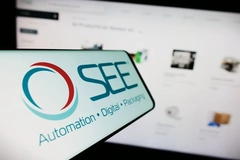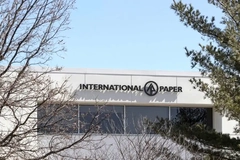Reusables rethink? Greiner, Walki and ProAmpac unravel circularity regulation at Interpack 2023

23 Jun 2023 --- Upcoming EU legislation aims to further incentivize a circular economy for packaging, but leading suppliers are unconvinced by its increased focus on reusables, which studies have determined are less net eco-friendly than single-use solutions in many applications.
We caught up with senior representatives from Greiner Packaging, Walki and ProAmpac at Interpack 2023 in Germany to discuss the opportunities and pitfalls of new regulations and how these packaging suppliers are pushing toward circularity in Europe and worldwide.
Proposed revisions to the EU’s Packaging and Packaging Waste Directive (PPWD) suggest dramatic new measures could be taken to boost reusable packaging. For example, 80% of cold and hot beverages could need to be made available through reuse or refill models by 2040 (20% by 2030).
“Refill and reuse could be the way to go,” Rachel Sheldon, sustainability and innovation manager at Greiner Packaging UK and Ireland, tells Packaging Insights, “but if you look at the carbon footprint and water usage for these systems, there’s clearly a need for some single-use products.”
Annika Sundell, EVP for innovation and business development at Walki, echoes this concern: “We have seen in different LCAs that reusable packaging is not always the best option if you take a holistic view on sustainability.”
Innova Market Insights, which identified “Reusable revival” as a top packaging trend for 2023, found that reusability is an important packaging-related purchasing consideration for nearly half (43%) of global consumers.
Paper-based potential
The PPWD revision proposal also indicates that packaging recycling targets could rise to 70% by 2030, including 85% for paper and cardboard and 55% for plastic. EU packaging recycling rates increased marginally from 63% in 2009 to 64% in 2020 but have stagnated since 2016. Sheldon at Greiner Packaging: One of the good things that came out of the COVID-19 pandemic was the QR code.
Sheldon at Greiner Packaging: One of the good things that came out of the COVID-19 pandemic was the QR code.
According to Sundell at Walki, fiber-based packaging is well-positioned to meet the ambitious recycling goals because the material’s recycling network is well-developed across Europe.
“Fiber will take a bigger market share due to new innovative barriers, but a large share of applications will remain in plastic, especially with the development of chemical recycling. So, we need to have a range of different material solutions,” she says.
Walki offers a wide portfolio of flexible and rigid recyclable solutions in fiber and monomaterial plastic.
At Interpack 2023, it unveiled a tear-resistant fiber-based pouch, which enables products from confectionery to metal screws to transition from plastic to paper and still be hung up on metal hooks in supermarkets. The new pouch uses a double-layer strip that is invisible to consumers.
However, without more widely implemented EPR rules, circularity progress will remain limited.
“Somehow, eco-modulation fees are still behind the ambition of the regulation and, as long as that is the case, there is no real incentive for brands to move to recyclable packaging,” warns Sundell.
Recycled plastic revival
Recent new rules in Europe requiring recycled content in plastic packaging exposed a lack of affordable post-consumer recyclate (PCR). In the UK, for example, we revealed last year that brands were choosing to pay the country’s levy rather than meet the 30% PCR requirement, as it was seen as the cheaper option. Sundell at Walki: New barrier innovation in fiber-based packaging will give it a bigger market share.
Sundell at Walki: New barrier innovation in fiber-based packaging will give it a bigger market share.
“We were concerned about the UK plastic tax coming into play,” says Sheldon at Greiner Packaging. “We thought there would be a surge of recycled PET (rPET) on the market, but it was prohibited by high cost, meaning the big rush we expected for our recycled solutions didn’t come.”
“But we’re now seeing now that the price of rPET is coming down, and we have plenty of market supply.”
Like other packaging suppliers, Greiner Packaging increasingly sources PCR directly from its own recycling facilities to avoid potential supply disruptions.
“Ultimately, as brands require more recycled content, you’ll see packaging companies acquiring recyclers to get that direct feed into their products,” continues Sheldon.
Although Sheldon views cross-industry access to recycled plastic supply as a “starting point” for the circular economy, tray-to-tray and cup-to-cup recycling should be the end goal. But this ambition will require greater investment in recycling infrastructure and consumer education.
“Money needs to go back into the recycling infrastructure,” she says. “Greiner Packaging could design the most amazing packaging, but if the awareness, education and resources aren’t there, it is hard to recover the material and make that ‘loop.’”
At Interpack 2023, the company showcased a QR-code initiative designed to engage consumers to recycle its easily-separable K3 r100 cardboard-plastic cup.
According to Innova Market Insights, 30% of global consumers perceive consumer behavior as the leading cause of plastic pollution.
Navigating Europe and US
New packaging regulation will have a huge impact on PCR accessibility and inspire recycle-by-design structures, according to Hesam Tabatabaei, SVP for global product development and innovation at ProAmpac. But as a global company that is increasingly operating in Europe, the packaging innovator must remain sensitive to regional rules. Tabatabaei at ProAmpac: The industry is pushing hard to produce structures that can be recycled.
Tabatabaei at ProAmpac: The industry is pushing hard to produce structures that can be recycled.
“In Europe, most PP base flexible packaging is considered monomaterial recyclable, but in North America, there’s no legislation or infrastructure for the collection of flexible PP plastics. So, in the US, we promote PP-based as ‘recycle-ready,’ meaning that the package can be recycled when the infrastructure exists,” he tells Packaging Insights.
“Whereas in Europe, we promote all PP-based structures as ‘recyclable’ in several countries because the infrastructure and legislation are more widely in place.”
However, the US is more advanced than Europe in addressing the presence of intentionally added PFAS chemicals in fiber-based packaging, with bans already in place in California and New York, notes Tabatabaei.
ProAmpac pioneers recycled and recyclable flexible packaging for food and non-food products and also offers a portfolio of non-intentionally added PFAS paper-based solutions for foodservice, pet food and other markets.
Tabatabaei is optimistic about the future of the packaging circular economy, especially with well-known resin producers like Exxon Mobil, Nova Chemicals, Chevron and SABIC expanding their PCR solutions.
“In North America, there are direct food-compliant mechanically recycled PE resins available, but European regulators have not offered this approval yet – they must do so to encourage more companies to use PCR,” he says.
“Advanced recycled resins coming onto the market will help because we’re not going to be worried about contamination anymore since these resins are like virgin material.”
By Joshua Poole











